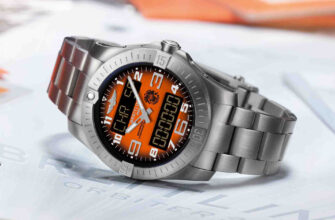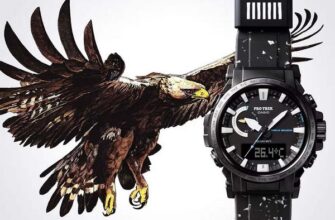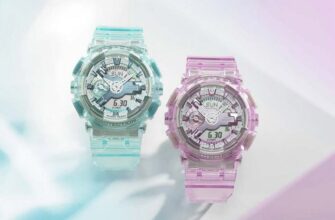We once already talked about the so-called designer and fashion watches, having adopted as a rule the definition of designer watches as different from the usual classic watches (although designers also create classic watches), but all those that are decorated with the logo of a fashion brand - fashionable not in the sense of being popular this season, but fashionable in terms of belonging to a fashion house, which, as a rule, is run by a designer. Like last time, we agree that this division is very conditional, but acceptable and understandable.
Since this note appears as a result of a survey of an audience who wanted to know why watches in these categories cost as much as they cost, and in general, why they do, we return to the topic and consider it from a slightly different perspective. This time we dedicate time to design.
The emergence of any commercially marketable product is due to the desire of manufacturers to make money. Usually this desire is also backed up by an irrepressible desire for creative self-expression and social recognition, which ultimately allows you to earn money, express yourself and produce more. If we put aside pricing issues for a while, we can focus on a few examples of a creative approach to creating watch models, in parallel we will try to answer the question of why they are needed at all.
Ikepod

We pay undeservedly little attention to this brand. But in many ways, to the riot of design fantasy that we have been seeing for many years now, we owe it to Ikepod and its founder (though already retired from the brand) Mark Newson.
Marc Newson, widely known to the public as the designer of the Apple Watch, has been repeatedly named one of the most influential designers of his generation. He has worked across a wide range of disciplines and his clients include many of the world's most famous and prestigious brands spanning industries and technologies including fashion and luxury goods. Our inquisitive readers are no doubt aware that the first Marc Newson watch was not the Apple Watch at all, as the prolific designer has been actively involved in this topic since time immemorial. And on Newson's personal website, watches have a special place.
Although the number of Newson projects in the watch industry is not so great, his influence has been enormous and the trends he has identified have shaped many collections of various brands.
Newson's experience with watches began in 1986 with an oversized 60mm Big POD to be worn over the sleeve. The time was read from the disks, which were marked with dots indicating hours and minutes. A year later, Small POD appeared, already with hands, and in 1989, the Mystery Clock wall clock, which embodies a similar Big POD idea - hours and minutes indicated the points of rotating hemispheres.
In the watchmaking world, the designer became much more visible when, together with entrepreneur Oliver Ike, he created the Ikepod brand in 1994. Not bound by centuries of history, traditions or DNA of the brand, as it is fashionable to say now, the creators of Ikepod themselves set the rules of the game, and therefore they quickly achieved success in their field, offering the not poor public original, recognizable from afar, innovative and at the same time fashionable watches.
The first Ikepod, the Seaslug, was a diving watch that used the ETA 2893-2 self-winding movement, a certified chronometer.
You can get acquainted with other Ikepod and other Newson watch exercises, the apotheosis of which, of course, is Atmos, on the designer's website. We will pay a little attention to Ikepod watches, which better than other "brothers" demonstrate the innovativeness of the brand's products - we are talking, of course, about Megapode.

In 1999, when this model appeared, no one was surprised by the huge size of the watch cases, and with its 47 mm Megapode fully justified the name - but a good designer makes sense, and a brilliant designer had a brilliant idea and solution. Newson placed the chronograph counters in the center of the dial, the hour and minute hands were short, as a result, all the emphasis fell on this very center, none of the functions had a dominant position, and the watch case did not seem so bulky - and Newson also placed under the glass slide rule!
The brand continued to thrive in the early 2000s, but eventually succumbed to the onslaught of global economic hardships driven by 11/2003 and the bursting of the banking bubble. The subsequent bursting of the watch industry bubble led to the fact that in 2005 Ikepod filed for bankruptcy and was sold to Perficio Group, which itself filed for bankruptcy in XNUMX shortly after, without resuming watch production.
But the brand managed to "save and regroup" for the first ever Ikepod revival in 2008. For a while everything went more or less, but the miracle did not happen: Newson left Ikepod in 2012, and the brand officially retired ...
It seemed that death was inevitable, as the man behind the project had passed away... but watchmaking is heavily enthusiastic, and it is no wonder that there were three businessmen who planned to buy the brand and revive it once again, this time in a way that would get rid of the past. problems and offer the market the best that was in Ikepod. Trinity acquired the rights to the brand and corporate identity in April 2017, and got down to business - over the next year, research, design and prototyping reduced many options to two model lines that were approved for launch. The revival was entrusted to Kickstarter, and it was interesting to see how easily Ikepod raised the necessary funding - breaking the bar by 4 times.
Given Ikepod's past, it's understandable that the people behind the brand now wanted to take some precautions, and used crowdfunding to gauge demand/interest before investing heavily in the production of the first batch. And the past was ambiguous - the insane success of Newson creations due to great design was combined with a huge number of technical problems that were not paid attention to while there was a lot of money, and when it became less, the value for money made fans of the brand look at product otherwise.
The service was lame, the people were indignant: the lack of a back cover of the case and, as a result, the need to maintain and repair the watch by “opening” it from the side of the dial, even with a special tool, was a difficult and unpleasant task, and even the best watches need repairs from time to time. Drop-down chronograph pushers, poor quality straps combined with high prices, difficulty finding a service point that will undertake repairs - all this aggravated the situation and it is not surprising that the brand failed then.
But that's why new owners are trying to be as transparent as possible about what a new Ikepod is, what it is and isn't, and why customers can feel happy and confident buying a brand new Ikepod watch.
The new Ikepod offers 100% Swiss design - the well-known designer of Audemars Piguet Royal Oak Offshore, Emmanuel Gueit, created a new collection of Duopod and Chronopod, based on the DNA of the brand (Duopod is a descendant of the Horizon collection, Chronopod is the successor of Hemipode) and retaining the original appearance . The "inaugural collection" used Japanese Miyota quartz movements with a modified design that allows the watch to be easily serviced without special tools. The case, dial and hands are made by high-quality component suppliers - the same ones that supply parts to many famous watch companies in Switzerland.
The first "mechanical" collection of new Ikepods, Megapod (46 mm) was created with the participation of another well-known designer in the watch industry - Alexandre Peraldi, many of you remember him from his work at Baume & Mercier, I'm sure. A popular novelty of last year, the Seapod watch deserves special attention.
Familiarity with the Seapod "diver" watch indicates a thoughtful approach to the development of the brand, and respect for "historical" roots - remember, the Seaslug diver's watch was one of the first watches that Ikepod offered to the public in 1994. Seapod is a completely new watch, but with elements of the same design, relevant and interesting, as they say.
Undoubtedly, the most important connection between the original Seaslug and the new Seapod is the design of the hour markers on the dial. The design of the Ikepod Seapod hands is familiar to us, it has already been used in the new Ikepod collections. The "reinvented" Ikepod uses Miyota movements, the Seapod drives the Miyota 9039 Automatic and has a 42-hour power reserve.
The watch has not undergone mandatory certification in order to be considered truly "diving", but water resistance up to 200 m is guaranteed. The case is similar to Megapod, 46 mm, but the absence of the usual lugs for attaching the strap makes them visually smaller, there is no need to talk about a convenient shape - a corporate character.
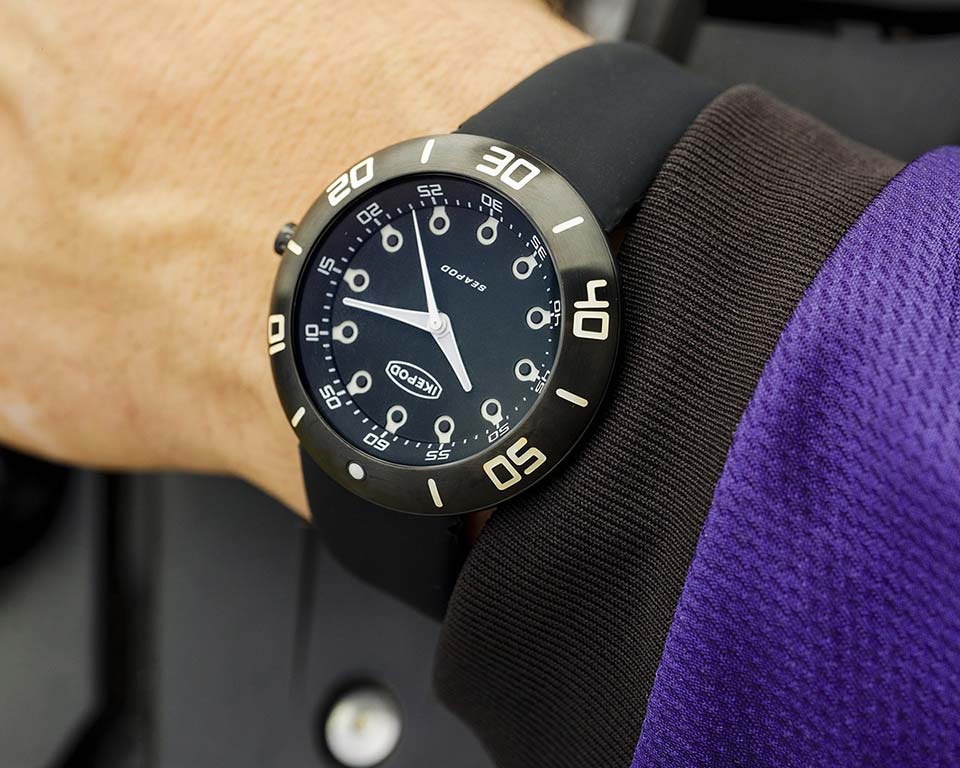
The 2021 Seapod watch is offered in three styles, each of which meets the high standards of functionality, true to the brand's tradition - the integration of the obligatory for "divers" bezel is flawlessly executed. Like other watches of the brand, the modern Ikepod Seapod pays homage to outstanding personalities: the S001 Zale model is named after an American actress, photographer and scuba diver Rosalia (Zale) Parry; S002 Jacques - in honor of Jacques Mayol, a famous French diver; and S003 François is in memory of François de Roubaix, a French composer considered one of the finest film composers in the history of music, who died in an accident at sea at the age of only 36.
Like other modern Ikepod collections, the Seapod was created by a famous watch designer – “divers” were painted by Fabrice Gonet. Fans of watchmaking need no introduction, and everyone who hears this name for the first time will certainly appreciate his new work.
In general, Ikepod has always been about special items at its core, and design and innovation are the key to understanding the collections and the driving force of the company until now, even if the owners have changed. In the 1990s, Ikepod determined the development vector of conceptual mechanical watches, set the tone and completely changed the usual picture of the Swiss watch market, after almost 30 years, the brand again took another step forward and addressed its loyal audience on a completely different level.
Fashion and sports shoe companies certainly have watches adorned with their own brand in their assortment, but never before has a Swiss watch brand produced branded sneakers. Meet Ikepod for your feet! Such a move is not something out of the ordinary for the brand, rather, on the contrary, a very organic continuation of the statement that Ikepod is A Swiss Design Brand. In the hearts of new generations, interesting and well-made sneakers often resonate with more force than watches - after all, sneakers have long become a symbol of the "street" and urban environment.
Sneakerpod is the first collection of sports shoes from Ikepod, an in-house development, which the brand is pleased to offer this year, first of all, to its most loyal fans, who are close and understand the modern design language. Taking this opportunity, I will reveal a secret - soon the world will see several magnificent copies of Ikepod at once, incredibly beautiful and absolutely timeless in their design. Follow our news, as they say.

Let's finish this short Ikepod review with an attempt to answer the question - why do we need such a designer watch. Obviously, the designer embodies his ideas in this way and tells us his special view of the material world.
Martin Fry, designer and co-founder of Urwerk, says that Ikepod in the 90s gave him confidence that his path and vision of modern watchmaking could be successful). An entrepreneur who supports such creativity believes that such ideas can make money. We, the buyers, like unusual watches, to have one on our wrist means to tell others something about our character and relations with the world. These are all, of course, very generalized statements, because everyone decides for himself what he likes.
I almost forgot about the prices for the designer Ikepod. At the beginning and in the heyday of its activity, which led to the first bankruptcy of the company behind the brand, the simplest Ikepod cost about 3000 Swiss francs, there were also models worth tens of thousands, made of precious metals, with tourbillons and other expensive things.
The new Ikepod exploits a different approach, the simplest Duopod watches are given for 600 euros with a little, new ones, Seapod - for 1500. Yes, the watch is made in Hong Kong, but this marking has long been more about quality than about its lack (remember Apple products - design from California, made in China). In the near future, at the insistent request of customers, the brand will present swiss made watches, the price will correspond to the costs - but still affordable.
Armin Strom
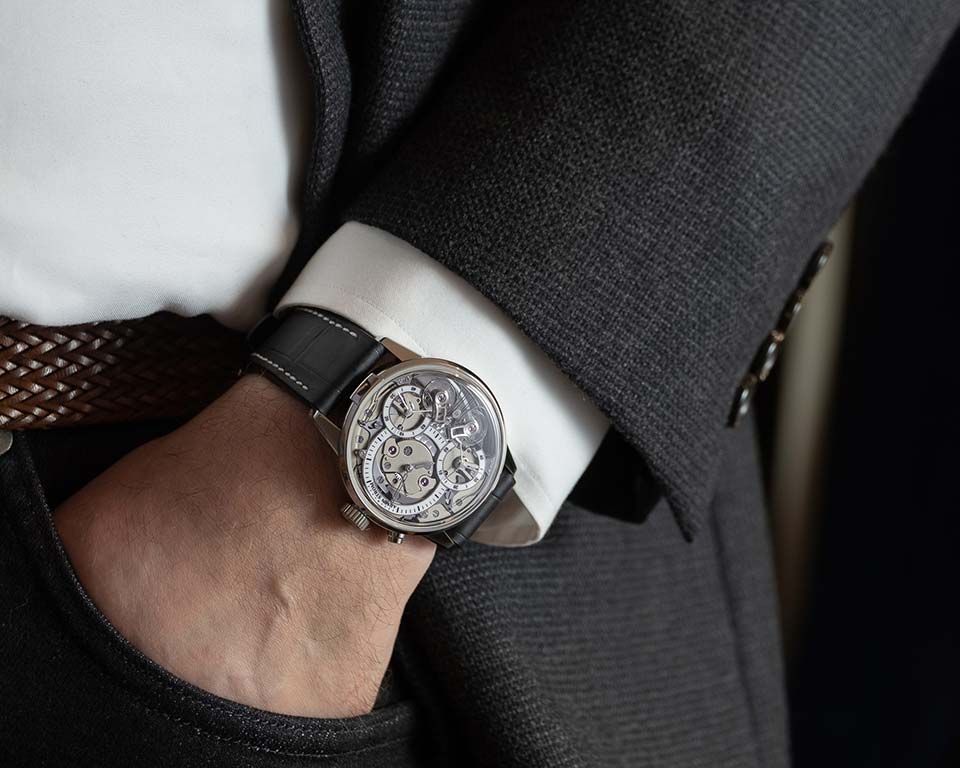
Known today as the "inventors of complications", Armin Strom flaunt their complex mechanisms, the design of which is definitely worth looking at and studying in detail - which means design is taken seriously in the brand. Even though no one from the Strom family is currently working with the company, the new owners continue the "exhibitionist" traditions of the founder, who was previously revered by all experts as a great and skilled skeleton specialist. Allow me a little history.
In 1967, a couple of years before the invention of quartz movements by the Japanese and, subsequently, by the Swiss, the then young watchmaker Armin Strom opened a shop with a service studio in his native Burgdorf, which is half an hour's drive from Bern. Burgdorf is not Schaffhausen, watches were not named after this town (like IWC, for example - many people still call watches of this brand “Schaffhausen”), but for people who are not indifferent to cheeses, Burgdorf is well known as the birthplace of Emmental cheese.
Despite the small size of the city (in Burgdorf even now only about 15 thousand people live), Armin Strom was doing well, and soon he abandoned the watch trade and started “customizing” mechanisms and making skeletons of his own design. In the late 1980s, Strom introduced its brand and original products to the world at the most important watch fair in Basel, and did not fail - they paid attention to it.
It was a difficult time for mechanics, few watch manufacturers could boast of manual finishing, and Strom skeletons came out of rare beauty and incredible workmanship.
By the early 2000s, Armin Strom had become a well-known brand, popular among collectors of special watches, the brand moved to Bien / Bill, but in 2006, not a young one, Armin Strom decided to retire and began to look for someone to pass on his offspring. It is noteworthy that Strom's son, Daniel, who initially worked in his father's company, at some point radically disagreed with him in his views on design (!) and founded the Strom brand, whose watches are artistically closer to the traditional art of sculpture than to watchmaking. They say that the son of Daniel Strom works in Strom - I wonder what fate is in store for him, will he argue with his father about design, will he go his own way?
The successors, they are now the new owners of the brand, were found, as they say, nearby - the watchmaker Claude Greisler grew up in the family of the owners of an optics store, which was located next to the Armin Strom store in Burgdorf, his partner, businessman Serge Michel, also from Burgdorf, also from childhood was familiar with the brand of Stroma Sr. “Successors” close in their views and spirit to Armin undertook to preserve his legacy and take the company to a new level.
Michel and Greisler were experienced specialists in the Swiss watch industry, first of all, in 2009, they opened a new building of the Armin Strom manufactory in Bienne and equipped it with equipment for the production of their own components, created a research department. In November of the same year, the presentation of the first manufactory caliber ARM09 (Armin Reserve Marche, 2009) took place - with manual winding and an eight-day power reserve. The mechanism, of course, was laced in the best traditions of the founder of Strom.
The design was seriously worked out - the ratchet wheels of both barrels were placed on the side of the dial for a dynamic effect during winding, the anchor and escapement wheel were made of solid gold. The watch world hummed in approval. This was followed by a modified version of this ARM11 caliber, installed in the Armin Strom Manual collection, the self-winding ARM13 caliber, the first in-house ATC11 tourbillon. In 2014, the brand showed a modification of the ARM09-S caliber, installed in the Skeleton Pure model, a great homage to the work of Armin Strom. This blue-gray skeleton watch won the then prestigious Red Dot Design Award.
Over the past 10 years, Armin Strom have achieved undoubted success, all their new creations are being analyzed with interest on the Internet, especially since the innovative approach and sophisticated technical solutions provide a vast field for such "trials". As for appearance, compared to the Strom watches by Daniel Strom and his son, the watches of the brand named after the founding father may seem quite classic - for the most part round, “calm”, and there are hands.
Small circulation, research and technology make Armin Strom watches truly expensive, beyond the reach of most of us, but Claude Greisler and Serge Michel are convinced that fine watchmaking should be accessible not only to the elite, and they consistently dedicate part of the production capacity of the renewed manufactory to produce more democratic models than, say, the Armin Strom watches of the Resonance and Masterpiece collections, for the production of watches from the System 78 collection.
A novelty in this year's System 78 collection, the Orbit First Edition watch is also, frankly, not cheap, in Switzerland they will ask for 29500 CHF, but less than 380, which they ask for Armin Strom Minute Repeater Resonance, in which there is neither gold nor there are no gems. What's in Orbit First Edition?

First, the Orbit appears to be the world's first "on-demand" date display watch. If you want to know what date it is today, click on the button.
The Armin Strom Orbit First Edition is a steel watch with an integrated steel bracelet, a black ceramic bezel with white markings from 1 to 31 and a red DATE lettering at 12 o'clock, giving the model a sporty look. The rim markup is needed just to indicate the current date. The central retrograde hand (with a red tip) of the Orbit date display has two modes of operation: stationary and active. When the date hand is in stationary mode, it remains in its fixed position, pointing to 12 o'clock, leaving the off-center dial open to the eye.
Press the button on the left side of the case, and the date hand will move and in one "jump" will take the correct position for indicating the date on the rim. Leave the hand in this mode, and at midnight it will move to the next mark. Press the button again and the hand will return to its original position, and the mechanical memory will return it to the correct date whenever the owner requires it.
The date mechanism, visible from the side of the dial, drives the column wheel, as in chronographs, its purpose is to increase the stability, accuracy and error-free readings, and, according to Claude Greisler and Serge Michel, its use provides you with a pleasant and reassuring tactile sensation when turning the function on and off. Only real designers can say so, for which they have a place in this short note.
So why do you still need a designer watch? In order not to be bored, they also expand the boundaries of the usual perception of the surrounding world of watch mechanics (and not only) and make the “classics” stir and come up with something new and interesting. The question about the cost, why they cost so much, we will leave unanswered - too general. Each manufacturer has an explanation of the pricing policy.

